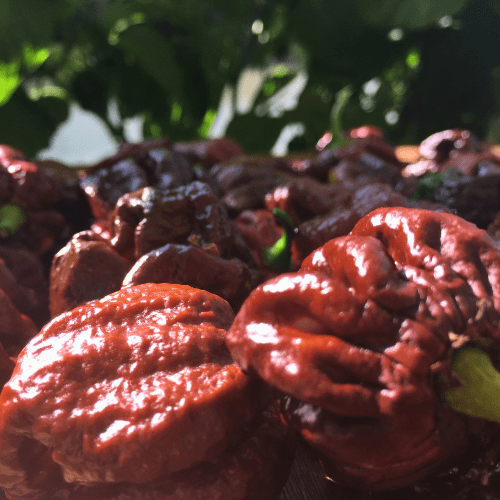Position
Bhut Jolokia Chilli plants thrive in warm climates with plenty of sunlight, Aim for at least 6–8 hours of direct sunlight per day. They require temperatures of 21°C – 32°C during the growing season.
While chilli peppers do well in warm weather, be cautious of extreme heat, which could stress the plants and reduce fruit production.
Bhut Jolokia plants can get top-heavy when laden with fruit, provide support with stakes or cages to prevent the plants from breaking.
Soil
This chilli plant is grown in a Root Stimulating Pot. It’s perfect for small properties or cold climates, as these pots are lightweight and easy to bring indoors during the winter. Additionally, it makes a wonderful gift when presented in a container!
Watering
Keep the soil consistently moist but not waterlogged. In hot weather you will need to water your chilli daily if no rain.
Mulch
Use from 2 to 5 centimetres of pine bark mulch to protect the roots from UV damage and drying out. It retains moisture and maintains an optimal pH. Do not let the mulch touch the plant stem, as it may cause infection or rot.
Re-apply every 3-4 months.
Pruning
Prune the plants by removing any dead or damaged leaves. You can also pinch back the growing tips to encourage branching and more fruit production.
Fertilising
Use a balanced fertiliser (such as 10-10-10) during planting and again every 4-6 weeks throughout the growing season to encourage healthy growth.
Too much nitrogen can lead to excessive foliage growth with little fruit production.
Apply 1 teaspoon every 4-5 months of our slow-release all-plant fertiliser. The roots will absorb what they need.
Pests & Diseases
Watch for pests like aphids, spider mites, and whiteflies.
Prevent fungal diseases like blight by providing good airflow and avoiding overhead watering. Crop rotation helps avoid soil-borne diseases.
Treat promptly or preferably use preventative measures by spraying with agricultural Neem Oil or Effective Microorganisms (EM Control)






